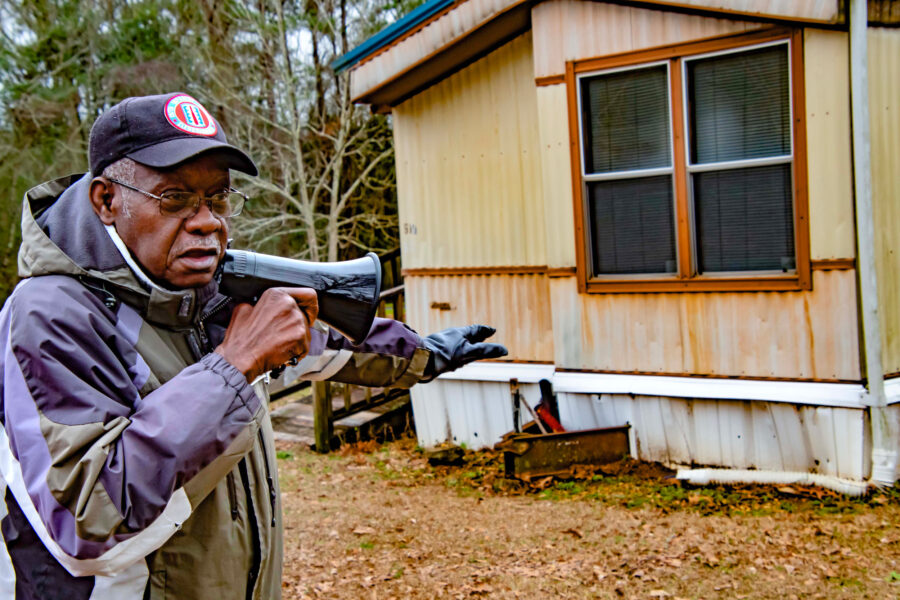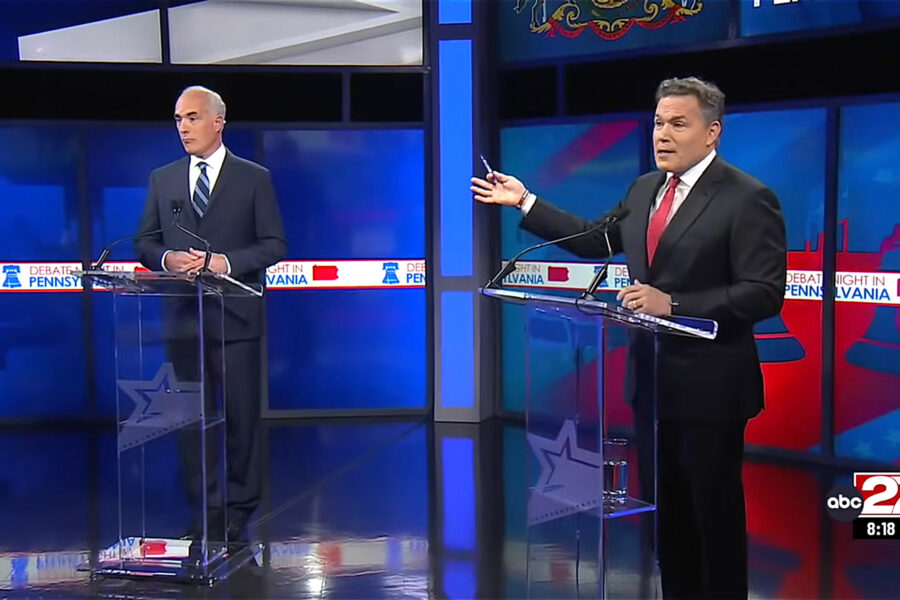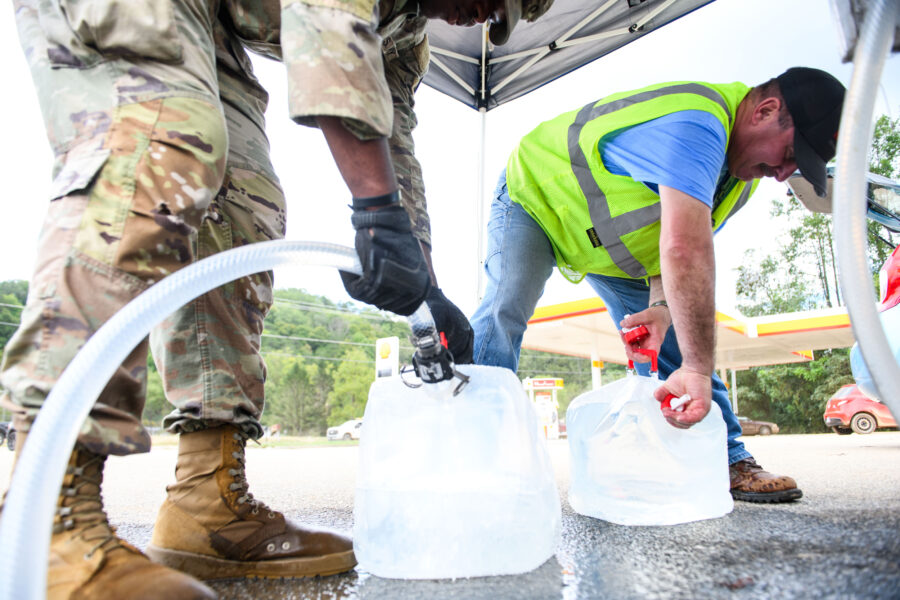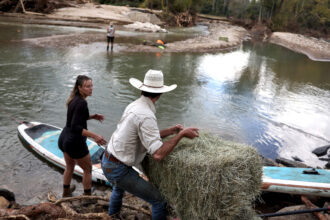Curbside ‘Composting’ Is Finally Citywide in New York. Or Is It?
When Christine Datz-Romero and her husband started the Lower East Side Ecology Center in 1987, where New Yorkers could drop off paper, metal, glass and plastic for recycling, they beat New York’s mandatory recycling law by two years.
Three years later, the ecology center grew to include its own composting facility where food scraps and other organic waste were turned into a soil-enriching fertilizer for farming and gardening.
On composting, Datz-Romero and her husband turned out to be 34 years ahead of the city.
This week, for the first time in New York’s history, all its residents will be required to separate food waste from other garbage. On Sunday, the city’s organics collection program reaches Manhattan, Staten Island and the Bronx after pilot periods in Brooklyn and Queens, the culmination of a decades-long quest by America’s largest city to divert millions of tons of organic waste from landfills, where it decomposes as methane gas and contributes to climate change.
Explore the latest news about what’s at stake for the climate during this election season.
The curbside program could be transformative. A 2022 pilot period in Queens diverted 12.7 million pounds of organic material from landfills in three months, according to the Department of Sanitation. But the nature of its change is uncertain.
Mayor Eric Adams and the Department of Sanitation (DSNY) have branded the curbside program as “composting,” the process through which food scraps and other organic waste naturally decompose over time and become “black gold,” enriching soil by increasing nutrient retention and delivering nitrogen, phosphorous and potassium to plants.
But the overwhelming majority of organic scraps collected by the curbside program thus far in Brooklyn and Queens have been turned into an “engineered bio-slurry” fed to microbes at city wastewater treatment plants and turned into so-called “bio-gas”—methane that is captured and then used like regular natural gas to help heat local homes and businesses.
Independent analysis of the program so far indicates it’s capturing a very low percentage of organic waste households generate, and some environmentalists and climate activists suspect that city residents do not understand that they are contributing to a waste-to-energy program, not a strict soil-regeneration effort. They worry that the curbside program, as primarily an energy-intensive, food scraps-to-gas process, will give local politicians an excuse to keep investing in fossil fuel infrastructure that leaks methane, a climate super-pollutant over 80 times more warming than carbon dioxide over a 20-year period.
Despite these drawbacks, the curbside program will still divert food waste from landfills, avoiding perilous emissions from one of the country’s largest sources of methane. Some environmentalists have even hailed the program as the seed of a future citywide composting initiative if it can give New Yorkers the muscle memory of separating food scraps from their other garbage.
“This is the beginning of a transformative change,” said Eric Goldstein, a senior attorney with the Natural Resources Defense Council. “It holds great potential for neighborhoods, cities and ultimately for the world’s climate if we can make composting the go-to method for dealing with food scraps, yard waste and other organics.”
The curbside program will require New Yorkers to dispose of their food and yard waste in personal bins in their buildings or in orange “smart bins” on street corners, which require an app to unlock. Organics bins in buildings will be collected by the DSNY on the same day as recycling.
Compliance is mandatory, but the city will offer a grace period as residents adjust to the new routine. Next spring, the DSNY will begin issuing escalating fines to buildings that fail to separate organics from other waste.
Under the new regime, the city will send a vast majority of the material it collects to three companies operating waste facilities in the New York City metro area. These companies can either compost the organics themselves, selling or donating the fertilizer to farmers or residents, or turn them into bio-slurry sent to wastewater treatment facilities to become gas for the electric grid.
Short-Circuiting the Carbon Cycle
Food, whether organic or extremely processed, contains carbon from the earth’s atmosphere. When that food is used to make natural gas, which releases CO2 back into the atmosphere if combusted, humans are effectively short-circuiting the carbon cycle.
But “it’s not new CO2 to the atmosphere,” an important distinction between burning the natural gas the curbside program will create and burning fossil fuel obtained by fracking, said Matthew Hayek, an assistant professor of environmental studies at New York University, who studies greenhouse gas emissions from our food system.
Still, there are tradeoffs, particularly when the alternative to composting is taking food that stored carbon and engineering it to produce methane. “We don’t want [food] to go from CO2 to plant carbon to methane,” he said, “because of the probability of methane leakage” from pipelines, compressor stations and power plants.
Aging gas infrastructure in New York City, home to buildings over 100 years old, has been a danger to residents and a hindrance to the city’s energy transition. Even if the gas materialized without emissions from drilling from fracking, furnaces and gas-powered stoves and ovens still send CO2 and other pollutants into the air when they combust the gas. “It’s an inescapably hard problem to solve,” Hayek said.
But Hayek had an even bigger concern. Running gas from food scraps through pipelines as the nation and New York City try to transition to renewable energy sources, and electric heat and appliances, as quickly as possible puts a premium on fossil fuel infrastructure. By sidestepping the production and equipment costs of fracking, “you’re keeping the transportation and distribution of natural gas inexpensive when every economic model and even our own city policies suggest we need to be electrifying our buildings and our infrastructure as rapidly as possible,” he said.
Composting, by contrast, has fewer holes to plug. When food breaks down in a composting pile, it does so exposed to bountiful amounts of oxygen, keeping most gas emitted in the process from turning into methane. Its output is a soily substance containing “phosphorus and nitrogen in the right proportions for an agricultural field,” Hayek said.
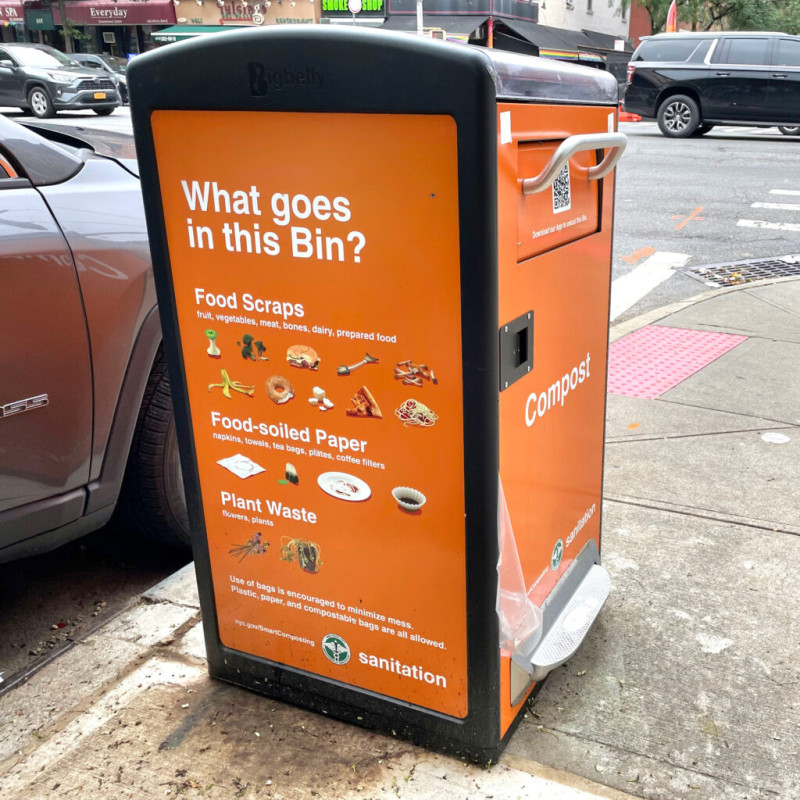
Under the curbside program, Staten Island is the only borough that would process large volumes of food waste and turn it into soil. Vincent Gragnani, press secretary for the DSNY, told Inside Climate News that the agency completed a “massive expansion” of its Fresh Kills composting facility on Staten Island “that increased its capacity by 2,000 percent.”
It’s possible that food waste from other boroughs eventually winds up there, he said, but “overall, it would be impossible to say at this point where any one borough’s material will end up—though material collected on Staten Island will likely continue to go to the Staten Island Compost Facility.”
Regardless of whether discards are composted or turned into energy, putting foods into brown bins in residents’ buildings or orange smart bins on street corners will be better for the planet, Hayek said. “It’s certainly better than sending it to a landfill.”
Murky Messaging
The tradeoffs between composting and energy production have not yet been the subject of much public discourse about the curbside program. At a February 2023 press conference announcing its expansion to all five boroughs, Adams called it the “nation’s largest composting” operation.
New Yorkers needed to squint to read the fine print in a release accompanying his announcement: Any food or organic waste that was not composted would be turned into “clean, renewable energy.”
Later that year, Adams proposed cutting funding to local composting nonprofits—one of the few places New Yorkers could be sure their food scraps would turn into soil. And the DSNY’s deputy commissioner, Joshua Goodman, told council members in a February 2024 hearing that, at the time, only 20 percent of the material discarded in Brooklyn and Queens was being composted under the curbside program.
When the council passed curbside composting, it did so as “a mandatory organics collections program,” said Shaun Abreu, a city council member who represents Manhattan’s seventh district, which covers much of northwestern Manhattan. The Adams administration, he said, has “taken the view more broadly that they can use it for other sources.”
“I do think that in many ways the administration is being misleading,” Abreu added, particularly by branding the city’s smart bins with the term compost. “I don’t think every constituent who’s participating in that process necessarily knows that [their food] is actually going to fuel.”
The Mayor’s office did not respond to requests for comment for this story.
“This has been covered extensively in local media,” said Gragnani, the DSNY press secretary. Local elected officials have communicated with constituents about the curbside program as well. DSNY has distributed fliers and knocked on doors of buildings that manage their own trash and hosted information sessions, he added.
Whether the curbside program will meaningfully alter New York’s emissions from food waste will depend in large part on how long the city commits to sending its food scraps to be turned into energy. In August, the city published eight contracts with three companies that would “pre-process and decontaminate the delivered organic material in preparation for recovery for beneficial use.”
Each contractor has the option of composting or turning the scraps into methane themselves, sending it to the Department of Environmental Protection (DEP) for “co-digestion” at a wastewater treatment facility, or sending it elsewhere, according to the contracts.
Denali and WM, two large waste and recycling companies that have seven of the city contracts between them to handle organic discards, did not specify how their companies plan on handling material from the DSNY and did not comment on the duration of their companies’ contracts.
“Denali is proud to be one of the vendors involved in the processing of material from the country’s largest curbside composting program,” company spokesperson Nancy St. Pierre said in an email.
American Recycling Management has a five-year contract to accept organics from the DSNY. The company plans on sending the material it receives out for both composting and anaerobic digestion depending “on the quality of material once it gets sorted,” said Dominic Susino, the company’s chief financial officer. Other private companies would perform either process, he said.
Last week, DSNY deputy commissioner Joshua Goodman said in a City Council hearing that the curbside program “drastically increases” the number of districts whose organic waste would be composted, while decreasing the number of districts whose waste is turned into energy.
Greenpoint, a historically industrial and increasingly residential neighborhood in northwestern Brooklyn, has already experienced what it’s like to play host to a waste-to-energy wastewater treatment facility.
For half a decade, the DEP and National Grid, one of the largest utilities in the country, collaborated to bring natural gas generated at the Newtown Creek Wastewater Treatment Plant to homes and businesses on the surrounding grid. It was a halting partnership, one that didn’t deliver gas for years—and even when it was in operation, the system was shut down about as often as it was online, according to reporting by The City, a local news outlet.
“There’s been a lot of issues with the operation,” said Willis Elkins, executive director of the Newtown Creek Alliance, a local environmental nonprofit. As National Grid and the DEP worked to bring their collaboration online, they would flare, or burn off, excess gas generated at the plant, emitting CO2 and a variety of hazardous air pollutants.

Today, National Grid appears to be running gas from the wastewater treatment plant in Brooklyn into the grid with fewer issues. “It has been a lot better in terms of the consistency of the operation,” Elkins said.
Elkins said he’s rankled by utilities’ involvement in the curbside program.
National Grid has already received approval for a rate hike to help cover the cost of expanding food-to-gas infrastructure, among other improvements. And Elkins said the utility can sell credits for producing low-carbon gas, even though the wastewater treatment plants and food collection are municipal services.
“It’d be very different if the whole thing was run by the city,” he said, but right now “it feels like National Grid is profiting in three different ways from this arrangement.”
National Grid did not respond to requests for comment.
Without consistent, community-specific messaging, the program stands a chance of flaming out, said Samantha MacBride, a professor at Baruch College and former manager and analyst at DSNY.
“The current administration thinks the past problems with curbside organics can be solved with simplicity,” she said. But the program is not simpler, she said, which threatens to spoil its uptake. If people aren’t contributing to the program, “the system cannot work. It cannot be financially sustained.”
Seeding a Greener Future
When the Adams administration cut funding for local composting nonprofits in the city, many were forced to stop collections. But this summer, the City Council restored the groups’ funding, in part because it wanted places where New Yorkers could know their food scraps would be turned into soil.
“We understand the role that these nonprofits played in collecting food scraps and the impact that had on actually creating compost,” Abreu said. These nonprofits would also help the city’s curbside program by providing “education and the excitement, and the civic significance, for folks to get involved,” he said.
“You can hand out a bunch of bins—it doesn’t mean everyone is going to utilize it. There needs to be more education and outreach,” said Bridget McCann, an operations coordinator with the Lower East Side Ecology Center, which Datz-Romero and her husband made the birthplace of New York City composting 34 years ago.
“Step No. 1 is getting New Yorkers to separate their organics … Step No. 2 is ensuring that the separated food scraps and yard waste go to their highest and best and most sustainable use—which is composting.”
— Eric Goldstein, Natural Resources Defense Council senior attorney
Datz-Romero welcomes a collaboration between the ecology center and the city. “Our role has been for the last 30 years really about saying [composting] is possible, New Yorkers will do it and we should do it,” she said.
The curbside program is “another milestone” the center and the city can build upon, she said.
Goldstein, of the Natural Resources Defense Council, thinks collaboration between the DSNY and composting nonprofits could spur a true citywide composting regime.
“Step No. 1 is getting New Yorkers to separate their organics,” which could be accomplished by the curbside program with the help of nonprofits, he said. “Step No. 2 is ensuring that the separated food scraps and yard waste go to their highest and best and most sustainable use—which is composting.”
A council bill introduced in March would direct the city to find sites for composting food waste in each borough; Rikers Island, the city’s infamous jail, has been touted as a potential green energy hub once it is closed in 2027.
What’s currently in place is not enough. New legislation is the only way “to ensure that this program is going to build up over time,” Goldstein said.
But it is unclear if New York’s leaders have the political will to pursue such legislation. Mayor Adams’ office, embroiled in various indictments, federal probes and resignations, did not respond to questions about whether he supported a compost-only or majority-compost program that would one day supplant the curbside program’s food-to-energy stream.
“I don’t really think there is the leadership at the DSNY right now to do something like this,” said Datz-Romero. “It feels almost like: ‘Curbside is rolled out and now we’re on to the next thing.’”
DNSY did not respond to questions from Inside Climate News about these critiques. But Gragnani said DSNY commissioner Jessica Tish has spoken with five local media outlets regarding the curbside program “with potentially more to come in the coming week.”
Both Goldstein and Datz-Romero feel the curbside program, however imperfect, is not an opportunity New York can afford to pass up. It’s too important to what the city could one day build.
“Cities are sustainable,” said Goldstein. “City dwellers generate less air pollution because they use more public transit. They generate less water pollution because they live in more dense living patterns. They use less energy because they’re in an apartment. We need to make cities livable, and community composting operations are part of the effort to make cities livable, and to revitalize neighborhoods.”
When Datz-Romero opened her composting facility decades ago, she never dreamt it would take the city this long to catch up. Now, the curbside program may already be faltering. In a recent analysis, MacBride found that the curbside program had captured less than 5 percent of residential organic waste generated in Brooklyn and Queens so far this year.
“If this program fails, I don’t think we will see composting in the city, at least not in my lifetime,” said Datz-Romero. “That would truly be sad because we just don’t have time to spare.”
About This Story
Perhaps you noticed: This story, like all the news we publish, is free to read. That’s because Inside Climate News is a 501c3 nonprofit organization. We do not charge a subscription fee, lock our news behind a paywall, or clutter our website with ads. We make our news on climate and the environment freely available to you and anyone who wants it.
That’s not all. We also share our news for free with scores of other media organizations around the country. Many of them can’t afford to do environmental journalism of their own. We’ve built bureaus from coast to coast to report local stories, collaborate with local newsrooms and co-publish articles so that this vital work is shared as widely as possible.
Two of us launched ICN in 2007. Six years later we earned a Pulitzer Prize for National Reporting, and now we run the oldest and largest dedicated climate newsroom in the nation. We tell the story in all its complexity. We hold polluters accountable. We expose environmental injustice. We debunk misinformation. We scrutinize solutions and inspire action.
Donations from readers like you fund every aspect of what we do. If you don’t already, will you support our ongoing work, our reporting on the biggest crisis facing our planet, and help us reach even more readers in more places?
Please take a moment to make a tax-deductible donation. Every one of them makes a difference.
Thank you,
David Sassoon
Founder and Publisher
Vernon Loeb
Executive Editor
Share this article
- Republish
Disclaimer: The copyright of this article belongs to the original author. Reposting this article is solely for the purpose of information dissemination and does not constitute any investment advice. If there is any infringement, please contact us immediately. We will make corrections or deletions as necessary. Thank you.




